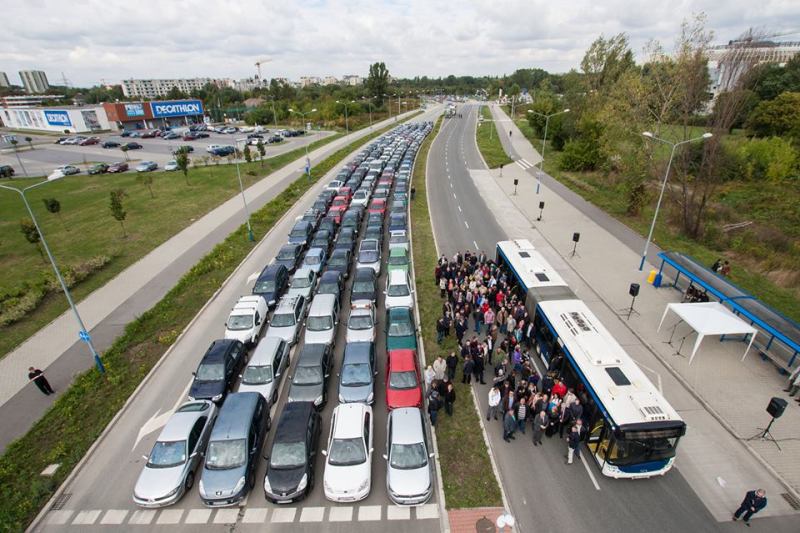Transit projects from Detroit to Nashville are running up against a new argument from opponents. The latest line from anti-transit types is that ride-hailing apps like Uber and Lyft are going to make fixed-route bus or rail service obsolete.
It doesn't hold up if you've given some thought to the huge amount of space cars consume compared to buses or trains. But many people don't spend their days thinking about the spatial efficiency of transit.
If you find yourself arguing with someone about why transit is essential, a new fact sheet from TransitCenter can help. It makes the case that Uber can't replace transit in clear, compelling terms that anyone can understand [PDF].
Here are TransitCenter's three points for transit advocates to commit to memory.
1. Uber and Lyft hog too much space
Let's say, hypothetically, that a city gives up on transit service because officials think Uber and Lyft can take care of things from now on. Imagine what happens next: Everyone who rides the LA Metro Bus system suddenly crowds onto the 405 in an Uber, every passenger on New York's L train has to hail a ride over the Williamsburg Bridge. The result would be total gridlock.
Uber and Lyft have some advantages in certain contexts. But car services can't overcome urban geometry.
2. Even lightly-used transit beats heavily-used ride-hailing services
Not every bus is packed, but even a mostly-empty bus can use streets more efficiently than Ubercars. A bus carrying about 10 passengers per service hour is generally considered to be "low-performing," TransitCenter points out. But that still beats the pants off ride-hail services.
"For an Uber or Lyft driver to serve ten people per hour," writes TransitCenter, "it would mean the driver is picking up a new passenger every six minutes, physically impossible in American cities."
3. Demand for transit peaks at different times than demand for taxis
If you look at when Uber and Lyft are most popular, it's during the night, when transit runs less often. Meanwhile, transit is at its fullest during the a.m. and p.m. rush. Not many people use Uber and Lyft for regular commuting.
Transit and ride-hailing services can complement each other -- especially at times or in places where transit is weaker. But don't be taken in by anyone predicting the end of transit -- buses and trains aren't going anywhere.






